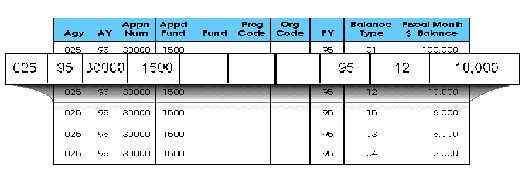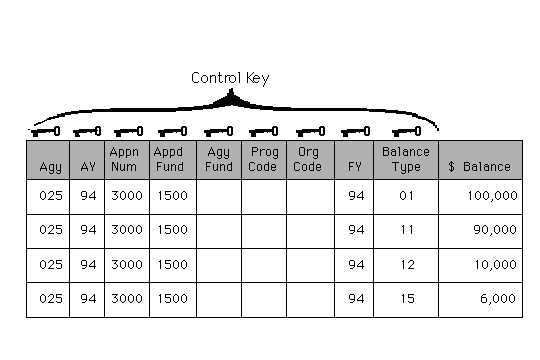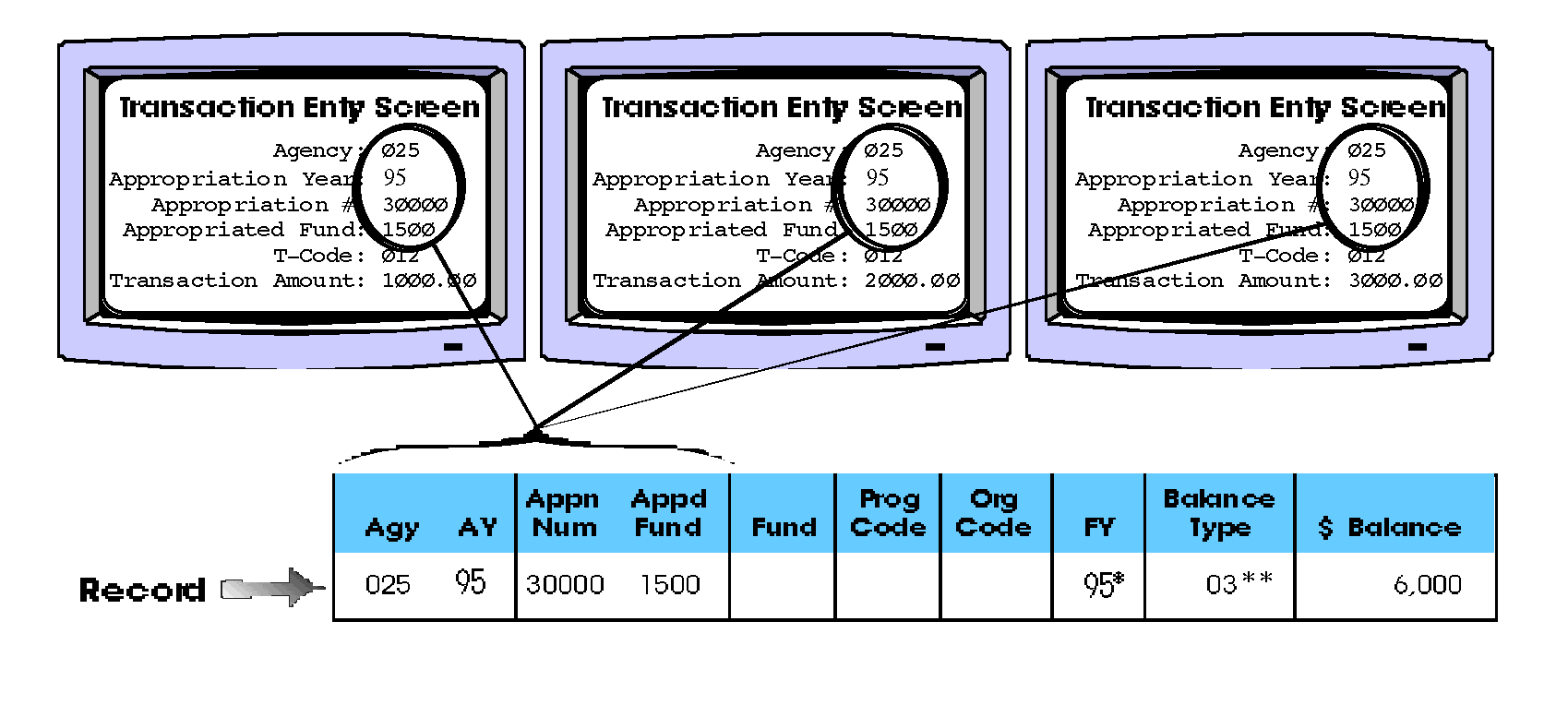USAS User’s Manual –
Chapter 12 – Understanding Financial Tables (continued)
Organization of Primary Financial Tables
Table Components
Each primary table has four components that are prerequisites to understanding how USAS posts data:
- Records
- Control Keys
- Balance Types
- Balances
Note: All primary tables shown in this chapter are only partial in view. They are intended to illustrate the concepts important to understanding the form and function of USAS primary tables.
Records
A single row of a primary table is called a record. Each record represents a unique grouping of transaction data. After processing a transaction, USAS posts the financial impact of that transaction to a record in one or more of the primary tables.
Appropriation Table Record

Control Keys
The Control Key of a primary table is the combination of data elements that distinguishes one record from another within a table. For example, if a user wanted to access a single record within the Appropriation table, the user would have to enter the data elements that make up the Appropriation table’s control key. The following is an illustration of the Appropriation table control key.

Functions of Control Keys
Control keys serve two main functions:
- Summarize transactions with identical control key data into one record (one row).
- Separate transactions with different control key data into different records.
The following example shows how USAS summarizes identical control key data from three transactions into one record of the Appropriation table.

* Fiscal year is posted to every transaction.
**Balance type 03 is assigned to T-Code 012. This will be explained later in this chapter.
Required and Optional Elements of Control Key
Elements of a control key are of two types:
- Required Elements-those that always post information.
- Optional Elements-those that a user can set to either post or not post information.
Required Elements
The required elements of a control key are the data elements of a transaction required for each table based on that table’s purpose. For example, the agency, appropriation number, and appropriation year are always posted to the Appropriation table. USAS automatically enters this data into the record because without it, the information on the table would not adequately serve its purpose of monitoring the appropriation budget.
Optional Elements
The optional elements of a control key give the user the option of posting or not posting certain elements in a primary table. This option, however, does not mean that users always have a choice of posting optional elements. Policy may prevent some of the optional elements from being posted. For example, the Appropriation table is used to monitor appropriation budgets at the level specified by the appropriation bill and by law. Consequently, the posting rules for the Appropriation table are defined by the appropriation bill and other legislation, not by the user.
Posting Optional Elements Some primary tables do, in fact, give users a choice of which optional elements they want to post. For example, users may customize all optional elements for the Agency Budget table to fit the needs of their agencies. One agency may customize the Agency Budget table to post agency object (an optional element) because it prepares its internal budget by agency object. Another agency may choose to post organization and comptroller object (both optional elements) because it prepares its internal budget by organization and comptroller object.
Each primary table in USAS has a different set of required and optional elements in its control key. For example, the control key of the Appropriation table is composed of nine elements-five required and four optional. By comparison, the control key for the Cash Control table posts eight elements-three required and five optional. The next section outlines the required and optional elements for five of USAS’s eight primary tables.